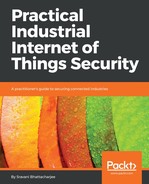Several IoT applications are digitally transforming healthcare systems around the world. Some of the common IoT use cases are connected hospitals, where connected medical devices are simplifying critical patient monitoring instruments. In hospitals, smart medical equipment provides accurate data and reduces cluttered wiring, thus reducing human error-related accidents. Remote monitoring of patients, particularly the elderly, is also a promising use case.
Real-time tracking of medical devices and personnel (such as doctors) in large healthcare facilities is possible by using Bluetooth low-energy (BLE) and RFID. Real-time OS and high throughput data buses allow the cloud connectivity of medical equipment to optimize equipment usage, reduce cost, and improve patient care with instant reports and health analytics. In the pharmaceutical industry, robotics and biosensors are improving the quality of drug manufacturing. IoT also improves visibility into the supply chain of pharmaceuticals, ensuring improved drug quality and patient safety.
In November 2017, for the very first time, the Food and Drug Administration (FDA) approved a digital pill (FDA-MED). A digital pill is a medication that's embedded with a sensor that can tell doctors whether and when patients take their medicine. Since critical medical devices and drugs are linked to human life/death conditions, conformance to FDA regulation is a helpful safety gate. Although regulatory intervention holds the reins for healthcare digitization, connected medical devices and hospitals are a reality today. Black hat incidents in hospitals also testify to the fluid attack surfaces that have been exposed with the adoption of internet connectivity in this slow-moving sector.
May 2017 saw one of the worst cyberattacks in medical history, which crippled the UK's National Health Service with the WannaCry ransomware. Outdated software and applications, legacy systems, and inadequate cybersecurity practices pose major risks for black hat exploits. Inadequate cybersecurity awareness among hospital staff, and the lack of security disciplines such as regular patch cycles, and so on add to the risk factors. In the case of a cybersecurity breach, loss of confidential information such as a patients' medical and financial records is bad enough, but an OT cyber incident can also temper with medication and monitoring devices, which could cost human lives.
